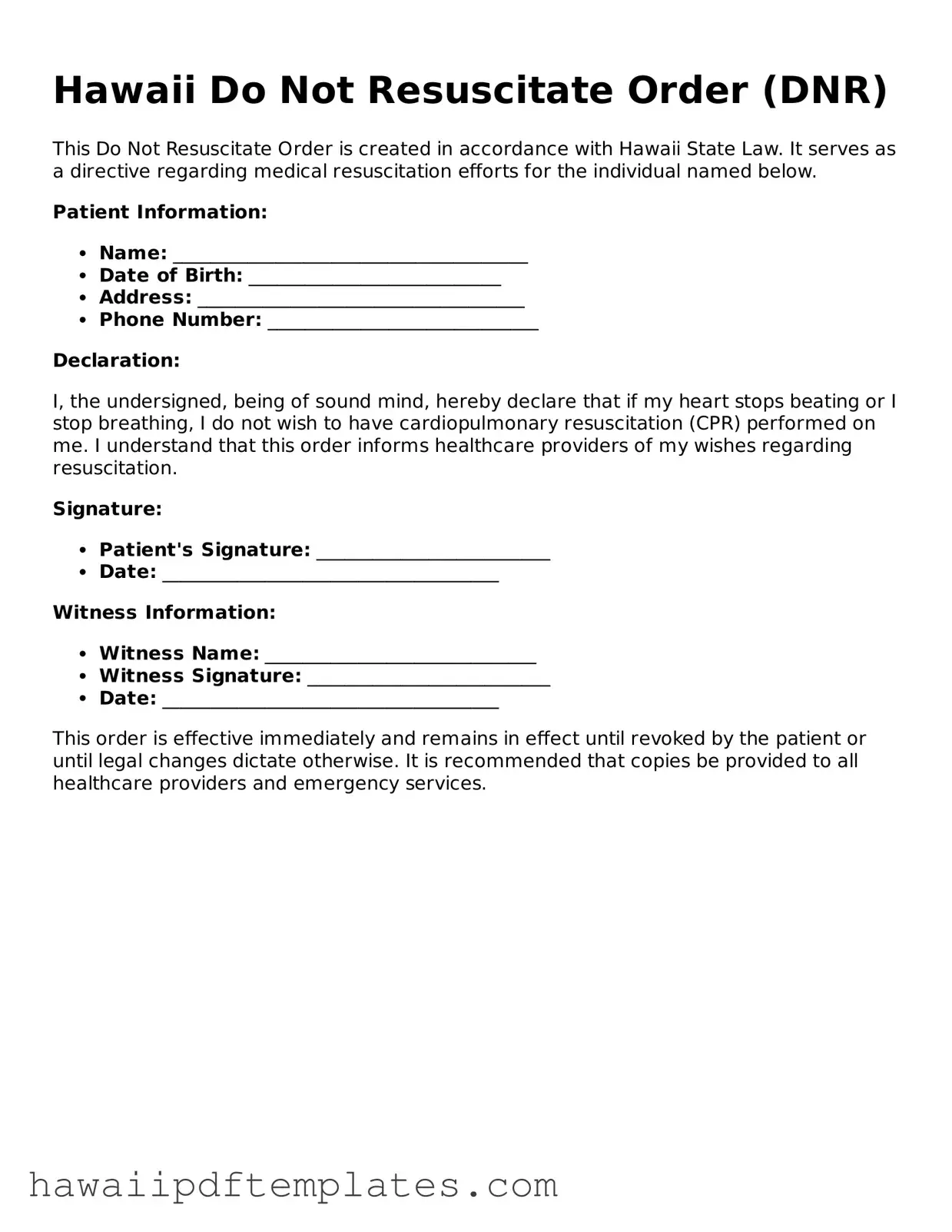Free Do Not Resuscitate Order Document for Hawaii State
A Hawaii Do Not Resuscitate (DNR) Order form is a legal document that allows individuals to express their wishes regarding medical treatment in the event of a life-threatening situation. This form ensures that, if a person experiences cardiac arrest or respiratory failure, healthcare providers will not perform resuscitation efforts if that is their preference. Understanding this form is crucial for making informed decisions about end-of-life care.
If you want to take control of your healthcare decisions, consider filling out the DNR form by clicking the button below.
Customize Form Online
